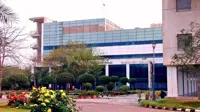JAM Trinity will unify Indians into one economic, digital space: Arun Jaitley
28 Aug 2017
The Prime Minister's Jan Dhan Yojana, Aadhar and mobile communication network, which combine to form the JAM Trinity, will be an effective basis for all-round growth and development of the economy, finance minister Arun Jaitley has said.
In a brief article titled, Jan Dhan Yojana and the 1 Billion-1 Billion-1 Billion ''JAM'' Revolution it is Unleashing, Jaitley said the achievements of the JAM Trinity have been remarkable along many dimensions.
''Three years ago today, Prime Minister Narendra Modi announced a flagship programme: Pradhan Mantri Jan Dhan Yojana (PMJDY) aimed at providing financial services to the poor. These included opening bank accounts for the poor, giving them electronic means of payment (via RUPAY cards), and placing them in a position to avail themselves of credit and insurance.
The vision underlying it was, of course, much broader: nothing short of ending the financial, and hence economic, digital and social exclusion faced by India's poor. India's poor would not only be able to overcome their economic deprivation but they would also become an integral part of the social mainstream.
Three years on, the achievements have been remarkable along many dimensions.
- Total PMJDY accounts opened increased from 125.5 million in January 2015 to 295.2 million as of 16 August 2017;
- The number of rural accounts opened under PMJDY has grown from 75.4 million in January 2015 to 176.4 million as of 16 August 2017;
- Number. of RuPay cards issued increased from 110.8 million in January 2015 to 227.1 million as of 16 August 2017;
- The total balance in beneficiary accounts rose to Rs65,844.68 crore while the average balance per account increased from Rs837 in January 2015 to Rs2,231 as of 16 August 2017;
- Zero balance accounts under PMJDY declined from 76.81 per cent in September 2014 to 21.41 per cent in August 2017:
- As of March 2014, women constituted about 28 per cent of all savings accounts, with 336.9 million accounts.
As of March 2017, according to data from top 40 banks and RRBs, women's share has risen to about 40 per cent. This includes 144.9 million accounts opened by women under PMJDY, out of a total of 436.5 million women's accounts. This represents a sizeable and rapid growth in financial inclusion of women.
In addition to financial inclusion, the government has taken steps to provide security to the poor via life insurance under the Pradhan Mantra Jeevan Jyoti Bima Yojana (PMJJBY) and accident insurance Pradhan Mantra Suraksha Bima Yojana (PMSBY). As on 7 August 2017, total enrollment was 34.6 million under the PMJJBY and 109.6 million under PMSBY. In both schemes, close to 40 per cent of the enrollees are women.
The entire network created by the Pradhan Mantri Jan Dhan Yojana (PMJDY) has also enabled implementation of the Mudra Yojana. As on 18 August 2017, Rs3,66,000 crore have been distributed to 87.7 million beneficiaries. These monies have all gone into their bank accounts.
But, as it turned out, PMJDY and the other schemes were only the first step because in turn they have unleashed the ''JAM'' revolution.
JAM, a term coined, and a vision conceptualised, by the outgoing chief economic adviser, is nothing short of a social revolution because it has brought together financial inclusion (PMJDY), biometric identification (Aadhaar) and mobile telecommunications. Today, about 524 million unique Aadhaar numbers are linked to 736.2 million accounts in India.
As a result, the poor are able to make payments electronically. Every month now, about 70 million successful payments are made by the poor using their Aadhaar identification.
Above all, the government now makes direct transfer of Rs74,000 crore to the financial accounts of 350 million beneficiaries annually, at more than Rs6,000 crore per month. These transfers are made under various government anti-poverty and support schemes such as PAHAL, MNREGA, old age pensions, student scholarships etc.
Now, with the BHIM app and the Unified Payments Interface (UPI), JAM can become fully operational. A secure and seamless digital payments infrastructure has been created so that all Indians, especially the poor can become part of the digital mainstream.
The JAM social revolution offers substantial benefits for government, the economy and especially the poor. The poor will have access to financial services and be cushioned against life's major shocks. Government finances will be improved because of the reduced subsidy burden; at the same time, government will also be legitimized and strengthened because it can transfer resources to citizens faster and more reliably and with less leakage.
Within reach of the country is what might be called the 1 billion-1 billion-1 billion vision. That is 1 billion unique Aadhaar numbers linked to 1 billion bank accounts and 1 billion mobile phones. Once that is done, all of India can become part of the financial and digital mainstream.
Just as GST created one tax, one market, one India, the PMJDY and the JAM revolution can link all Indians into one common financial, economic, and digital space. No Indian will be outside the mainstream. This is nothing short of a social revolution,'' the finance minister stated.

.webp)


.webp)




























